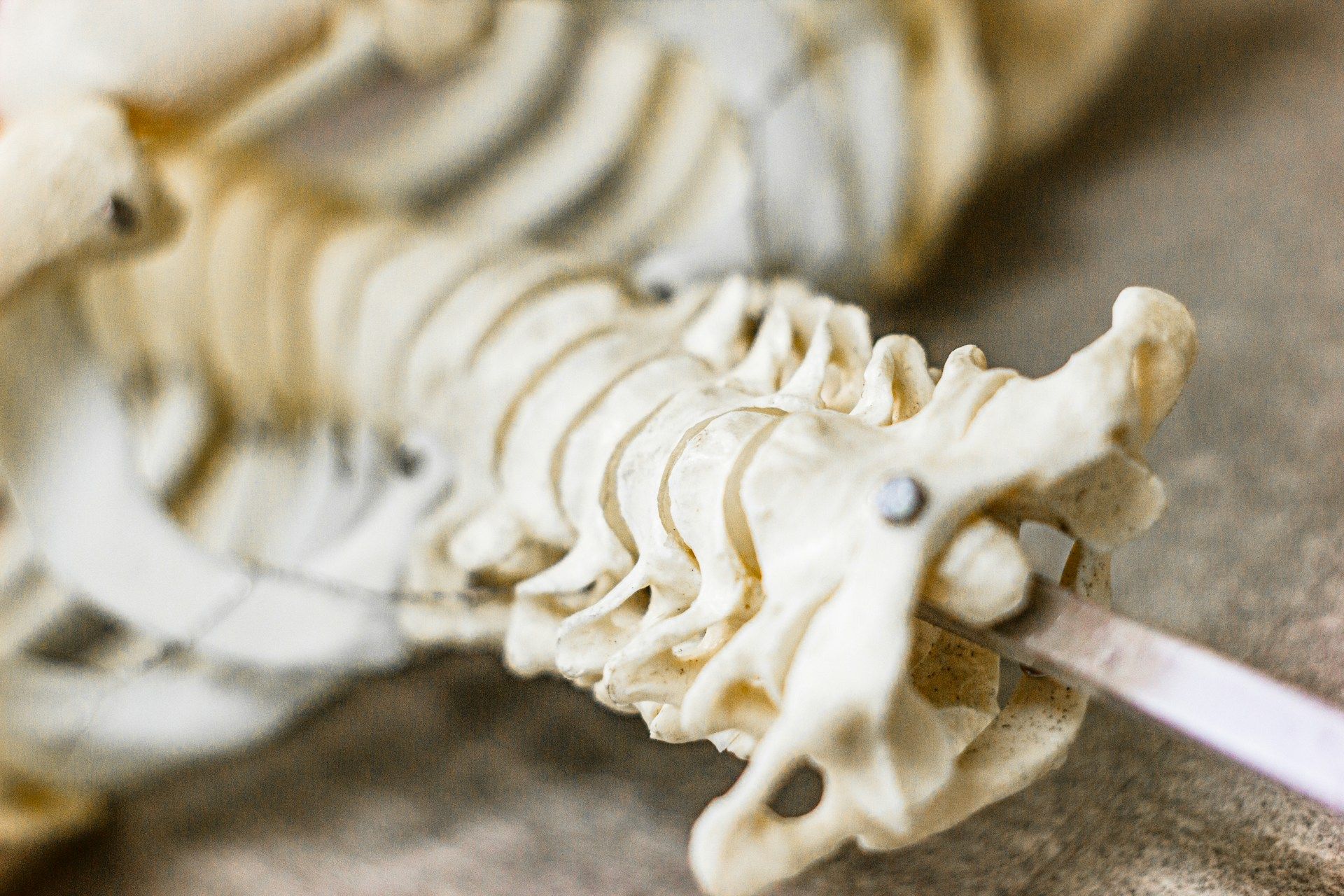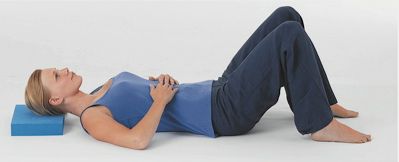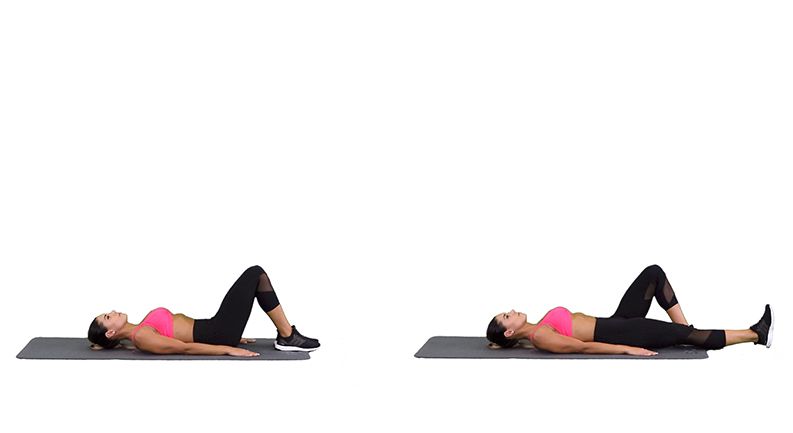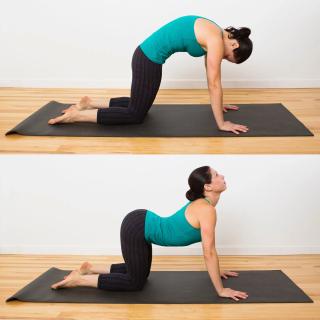How To Decompress Spine
Written by Dr. JoAnn Giesenhaus

From sitting at your desk to standing up, your spine constantly works against gravity.
While it’s normal for our spine to take on this extra pressure, it can damage and compress them over time.
Don’t fret! Keep reading to find out how to decompress your spine while sleeping now.
How To Decompress The Spine
These tips will help you stretch out your back at night to relieve lower back pain.
1. Pre-Bed Stretching Routine
Experiment with gentle stretching exercises before bed to help decompress your spine after a long day.
Low-intensity spinal decompression exercises include:

1. Supine Position
This just means lying flat on your back. It’s the most basic resting position and helps your spine naturally decompress without any added pressure. Ideally, your knees should be bent with feet flat on the floor, or legs supported by a pillow or chair to reduce pressure on the lower back.
Benefits:
- Relieves spinal compression caused by sitting or standing
- Encourages spinal alignment
- Great for beginning or ending a decompression routine

2. Heel Slides
Start by lying on your back with both legs extended. Slowly slide one heel toward your glutes while keeping your foot in contact with the floor or mat. Then slide it back out to the starting position and repeat on the other leg.
Benefits:
- Mobilises the lower spine and hips gently
- Activates core and leg muscles without strain
- Helps improve lumbar flexibility and circulation

3. Cat-Cow
Begin on all fours with your hands under your shoulders and knees under your hips. For Cat, exhale as you round your spine up toward the ceiling, tucking your chin and pelvis. For Cow, inhale as you arch your back, lifting your head and tailbone up while letting your belly drop.
Benefits:
- Promotes spinal flexibility and movement
- Stretches and strengthens the back and abdominal muscles
- Improves posture and spinal awareness

4. Child’s Pose
Start on your hands and knees, then sit your hips back toward your heels while stretching your arms forward and lowering your chest toward the floor. Your forehead should rest gently on the mat.
Benefits:
- Gently stretches the lower back, hips, and thighs
- Encourages relaxation and spinal lengthening
- Releases tension in the lumbar spine
Once you are familiar with these low-intensity exercises, you can move on to moderate-intensity stretches which will further help decompress your spine long-term.
2. Specialised Mattress & Pillow
Choosing a proper sleeping position isn’t the only way to decompress your spine in bed. You can also use sleep aids to keep you in position and comfortable throughout the night.
Memory foam has many benefits, especially if trying to elongate your spine. A memory foam pillow follows the natural curvature of your spine and removes excess pressure from your pressure points.
Similarly, you can invest in a memory foam mattress to take the pressure off your whole body. If you don't want to replace your mattress, buy memory foam mattress toppers.
Studies have shown that optimising your bedding reduces back pain and improves sleep (Jacobson, Boolani and Smith, 2009). So, don’t forget this tip!
Shop Our Memory Foam Pillows
3. Correct Sleeping Posture For A Healthy Spine
The best sleeping position for decompressing your spine is the flexed hip position.
To get in this position, lay on your side in bed and flex your hips at a 30-degree angle.
Then, bend your knees at another 30-degree angle. It might sound strange at first, but these angles allow your body to maintain balance while flexing your neck and elongating your spine.
You can add a pillow between your knees to keep your hips parallel while asleep. A memory foam knee pillow is best for aligning your hips and pelvis.
Alternatively, you can sleep in the face-up position.
This way, you’re lying on your back with your eyes facing the ceiling. You can add a pillow under your knees at a 30-degree angle.
This elongates your spine and helps to take the pressure off your back. You can also add a pillow under your neck for upper back support.
Inclined back sleeping is another great option for decompression. In this position, you sleep on your back with a pillow between your torso and legs.
This removes the pressure on your spine and suppresses lumbar spine injuries and sciatica symptoms.
Experiment with the different options and settle on whatever feels best for your body.
Always check with your healthcare provider before trying new exercises. If your pain worsens, stop the routine and monitor the condition. If the pain persists or worsens, book a doctor's appointment.
Shop Knee PillowsUnderstanding Spinal Compression
So, what is spinal compression? And what causes it?
Spinal cord compression is when the spine becomes compressed and puts pressure on the gel-like discs in your spine. This pressure makes it difficult for water, nutrients, and oxygen to flow through. Over time, the discs may herniate or bulge, leaving you in pain and with damaged nerves.
This condition is typically caused by gradual wear and tear (osteoarthritis) and is commonly seen in patients over 50 (www.hopkinsmedicine.org, n.d.).
Wear and tear isn’t the only cause, though. Compression can also occur due to injury, scoliosis, spinal tumours, infections, bone diseases, and rheumatoid arthritis — and these can happen at any age.
Symptoms of Spinal Cord Compression
Spinal compression can develop slowly and quickly, depending on the individual case. Compression due to infections or tumours may develop over days or weeks. Injuries can cause immediate symptoms. Wear and tear takes years to cause symptoms.
Here are the symptoms associated with the condition:
- Pain and stiffness in the back, lower back, and neck
- Burning pain in the arms, buttocks, or legs (sciatica)
- Numbness, weakness, or cramping in the arms, legs, or hands
- Loss of sexual ability
- Hand coordination difficulties
- Loss of sensation in the feet
Compression on nerves in the lower back (lumbar region) can cause more severe symptoms. Go to the emergency room if these symptoms are present:
- Loss of bladder or bowel control
- Severe pain and weakness in the legs that restrict mobility
- Severe numbness between the legs, inner thighs, and back of the legs

What Is Spinal Decompression
Spinal compression can be relieved via spinal decompression (stretching the spine). This takes the excess pressure off discs, allowing them to rest and heal.
There are surgical and nonsurgical spinal decompression techniques, and one of the most popular is changing your sleeping habits. This way, your spine can decompress as you sleep thanks to an aligned posture that takes pressure away from your back.
Other nonsurgical strategies include taking paracetamol or ibuprofen, heat therapy, cold therapy, acupuncture, massage, or seeing a physical therapist.
If you’re experiencing spinal stenosis, sciatica, a slipped disc, painful spinal injuries, or metastatic spinal cord compression, lumbar decompression surgery might be better for you (NHS Choices, 2020).
See your GP to find out more.
Benefits of Spinal Decompression
Embracing spinal decompression therapies comes with a range of advantages. Here are some ways you can improve your quality of life.
- Back pain relief (less upper and lower back pain)
- Better mobility
- Lessens stress on the spine
- Prevents future back pain
- Improved posture
- Higher sleep quality
- Lightens headaches
- Pain-free therapy
- Long-term results
Conclusion
Prioritising spinal decompression while sleeping will help you reduce pain, improve your posture, and get a better night of rest. Plus, the less compressed your spine is, the less likely you are to develop long-term side effects of chronic pain.
Hopefully, these tips have proved how easy it is to decompress your spine at night. Bookmark this page so you don’t lose them. Good luck!
Explore the world of memory foam now. The Original Groove Pain Relief Pillow is designed to provide effective pain relief and better sleep to refresh you in the mornings.
References
- Jacobson, B.H., Boolani, A. and Smith, D.B. (2009). Changes in back pain, sleep quality, and perceived stress after introduction of new bedding systems. Journal of Chiropractic Medicine, [online] 8(1), pp.1–8. doi:https://doi.org/10.1016/j.jcm.2008.09.002.
- NHS Choices (2020). Overview - Lumbar decompression surgery. [online] NHS. Available at: https://www.nhs.uk/conditions/lumbar-decompression-surgery/.
- www.hopkinsmedicine.org. (n.d.). Spinal Cord Compression. [online] Available at: https://www.hopkinsmedicine.org/health/conditions-and-diseases/spinal-cord-compression#:~:text=Spinal%20cord%20compression%20is%20caused%20by%20a%20condition%20that%20puts.
About The Author
Dr. JoAnn Giesenhaus is a dedicated chiropractor with over 20 years of experience, committed to helping people achieve vitality and live life to the fullest.
An expert in Corrective Care Programs, utilising advanced technology like Posture Screen, Sit Screen testing, Motion Study X-Rays, Arthrostim, and Vibracussor for gentle, effective spinal adjustments.

